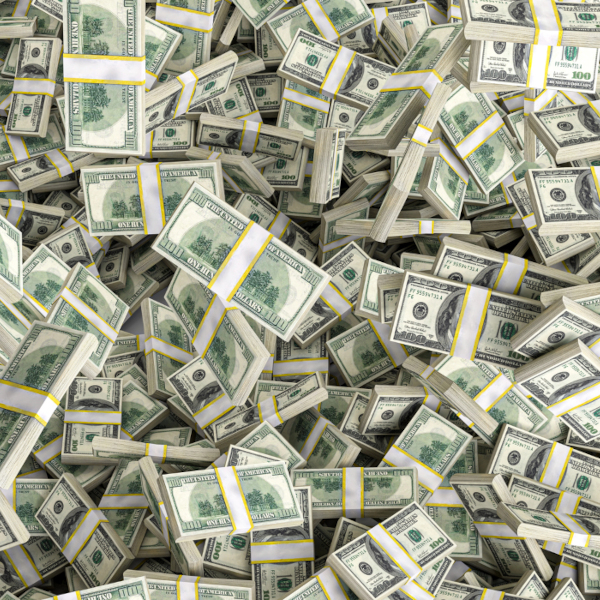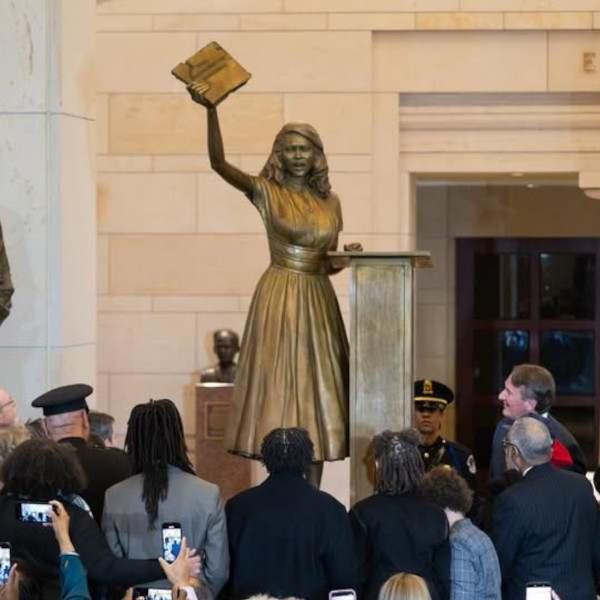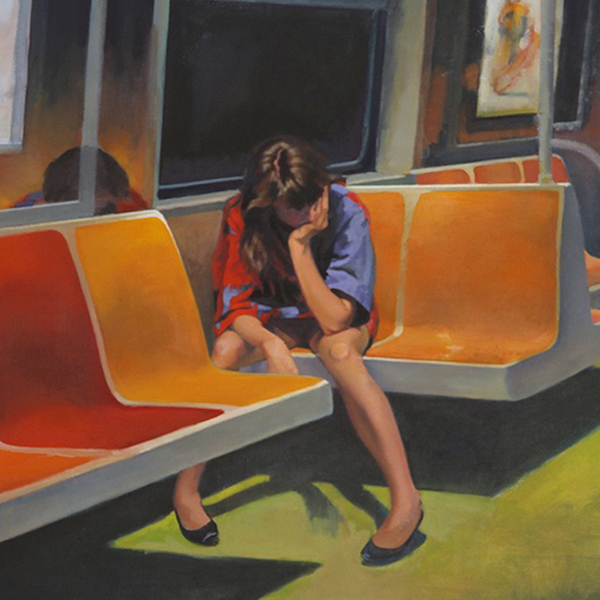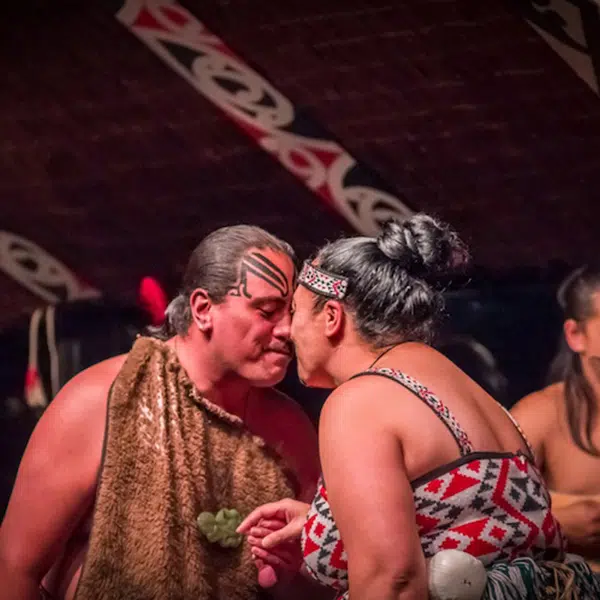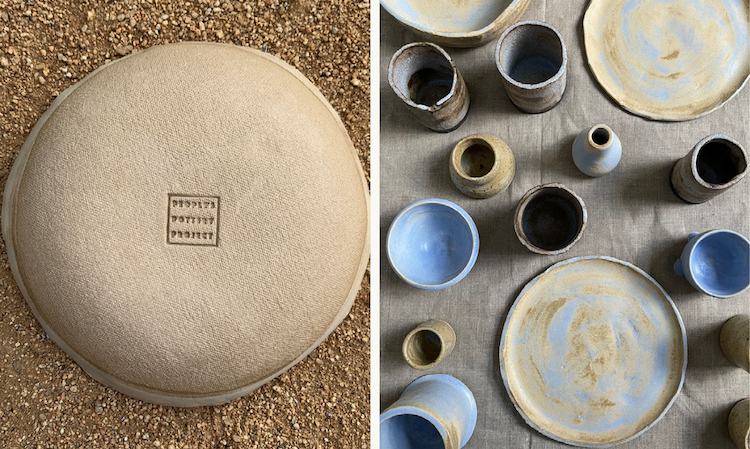
The arts truly have the power to change lives. The accuracy of this aspirational statement is well known by Los Angeles-based artist Molly Larkey, who founded a non-profit organization called People’s Pottery Project. After becoming affiliated with organizations such as Californians United for a Responsible Budget and the California Coalition for Women Prisoners, Larkey was inspired to use her artistic skills to build a community and uplift those who were transitioning from the prison system back into normal life. This endeavor was launched in 2019 as “an artist-driven initiative whose mission is to empower formerly incarcerated women, trans, and nonbinary individuals and their communities through the arts.”
Since its inception, only a couple of years ago, People’s Pottery Project—fondly known as PPP for short—has made great strides and improved the lives of many. By offering pottery classes to the public and making handmade ceramic bowls and plates to sell, they are able to offer employment and support to previously incarcerated people, giving them a chance to build a better life and remain out of the prison system.
We had the chance to speak to Molly about her experiences with PPP and its impact. Read on for My Modern Met's exclusive interview.
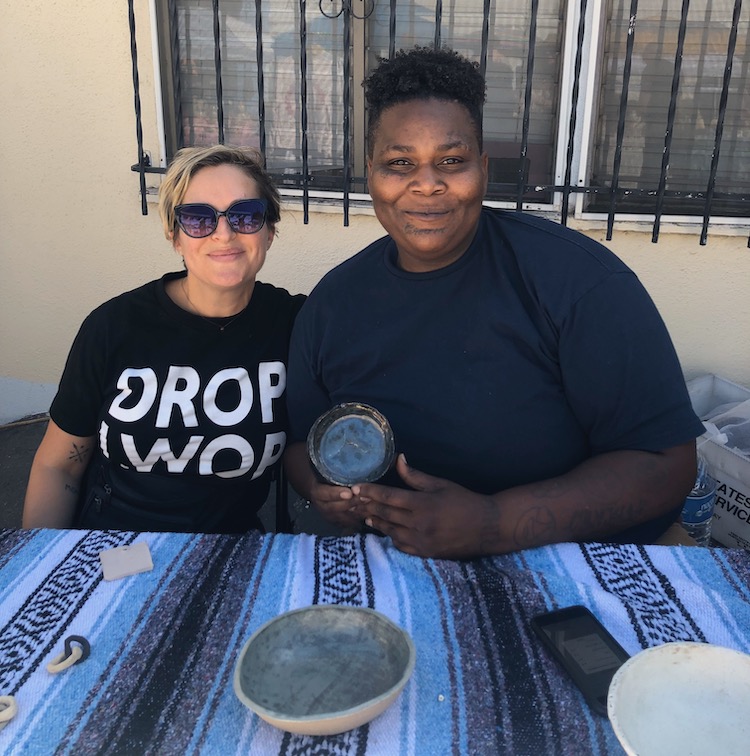
Left: Molly Larkey, founder of People's Pottery Project
How did People’s Pottery Project start?
I had been making artwork about utopian structures, based in a core belief that it’s possible to replace social and economic systems based in punishment, racism, misogyny, homophobia, etc. with systems that are mutually beneficial and healing. I also began to volunteer with different organizations, learning from prefigurative social justice movements like Occupy Wall Street, Standing Rock and Indigenous Sovereignty, Black Lives Matter, queer liberation, and the abolition movement. For me, creativity is an essential human need, and so I was always looking for ways to use my access to creative space and community as a way of contributing to these movements I was beginning to be involved in.
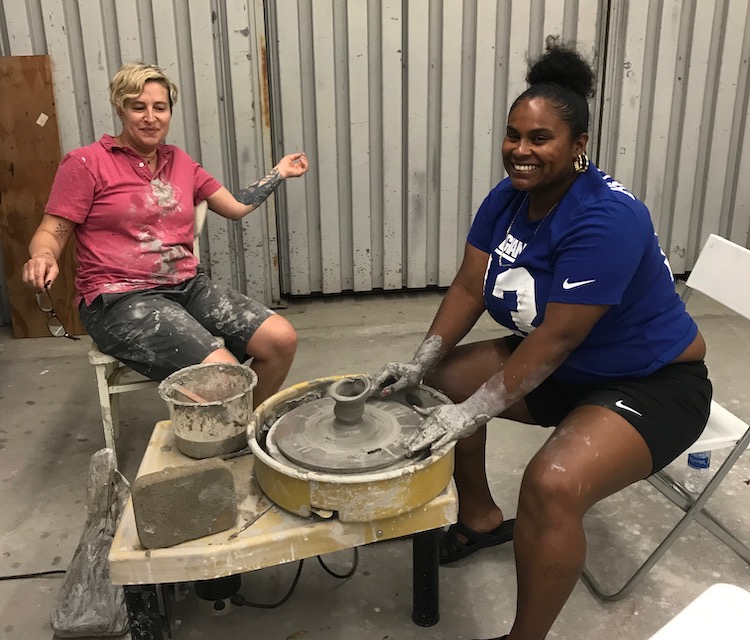
What led you to focus your efforts particularly on serving formerly incarcerated women, trans, and nonbinary individuals?
My first step in this direction was co-organizing an art auction benefit for CURB (Californians United for a Responsible Budget) in 2016 and CCWP (California Coalition for Women Prisoners) in 2018. In 2017, I became a member of CCWP, which really grounded me in mutual aid work, even though I didn’t know that term at the time. The history of CCWP is that it was founded in 1995 by women, trans, and gender-nonconforming prisoners in California as a response to the medical negligence and subsequent wrongful deaths that were occurring in the prisons. Because CCWP’s mission is based in mutual aid—supporting folks in their immediate needs as a method for addressing systemic oppressions—I learned that it is essential to center the needs of the impacted community first and foremost. By going to monthly meetings, writing letters to parole boards and local officials, and being involved in campaigns—such as #DROPLWOP, #METOOBEHINDBARS, and #SURVIVEDANDPUNISHED—I witnessed the traumas and neglect that incarcerated people were experiencing.

How has PPP grown and evolved since its beginnings?
A lot of CCWP’s work is getting people released from prison through commutation and parole board support and legislative reform. As people started being released due to these efforts, I also began witnessing the insurmountable challenges and hurdles facing people when they get out. As part of CCWP, one of the things that I could do as an artist and a business owner was to write letters of employment to people who were coming before the parole board. In 2017, I wrote a letter offering Ilka Perkins a job as my artist assistant upon her release. When she was released in 2020 and we finally met, I knew that she would be an amazing collaborator and was thrilled that she wanted to work for me.
At this point, I had already begun hosting free classes for formally incarcerated women, trans, and non-binary folks via word of mouth. A lot of people who came to those first classes were struggling with homelessness. So it was immediately apparent that people who came to class needed to be paid for their time: not only to value their creative contribution toward the organization that was starting to take form, but as a way to put money in their pockets. The group also started finding and sharing leads for housing and jobs, and strategizing how to access resources that might be available but are difficult to navigate. So even though we were gathering to make art, we were also informally finding ways to help people meet their basic needs.
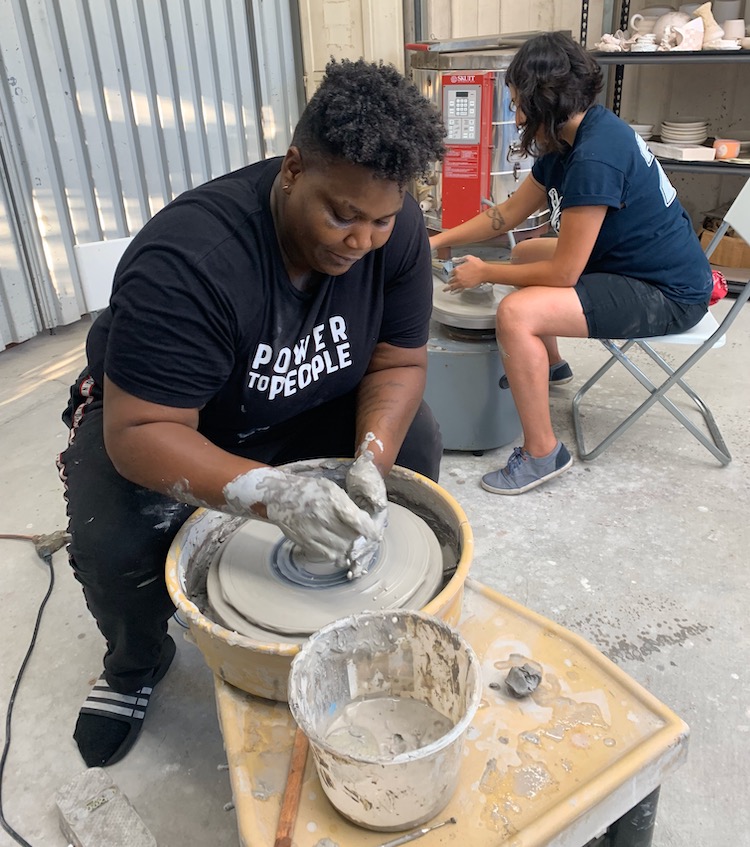
(continued) When Ilka started working for me as an artist assistant, she also started coming to the pottery classes with her wife Domonique. This is what really made the project come together. They are both so creative, smart, and talented, and they were excited about the idea of building PPP with me. They wanted to give back to their community even as they were working to build their own lives back. Importantly, they were more stable than a lot of other people who were coming to classes because they had family who they lived with (Ilka’s parents) and weren’t struggling to meet their basic needs in the same way a lot of people are upon release from prison.
That was in January 2020. In March, we had to take a pause because of the pandemic. We started again in May with just Ilka, Domonique, and their neighbor and friend Susan Bustamante, who I also knew from CCWP. Susan is a leader in the movement, as a spokesperson for the #DROPLWOP and #SURVIVEDANDPUNISHED campaigns. Her story is so powerful. She was a victim of domestic violence and was sentenced to LWOP (Life Without the Possibility of Parole); her sentence was commuted in 2018. With the four of us, we were able to refine our first ceramic designs and launch our website in August.
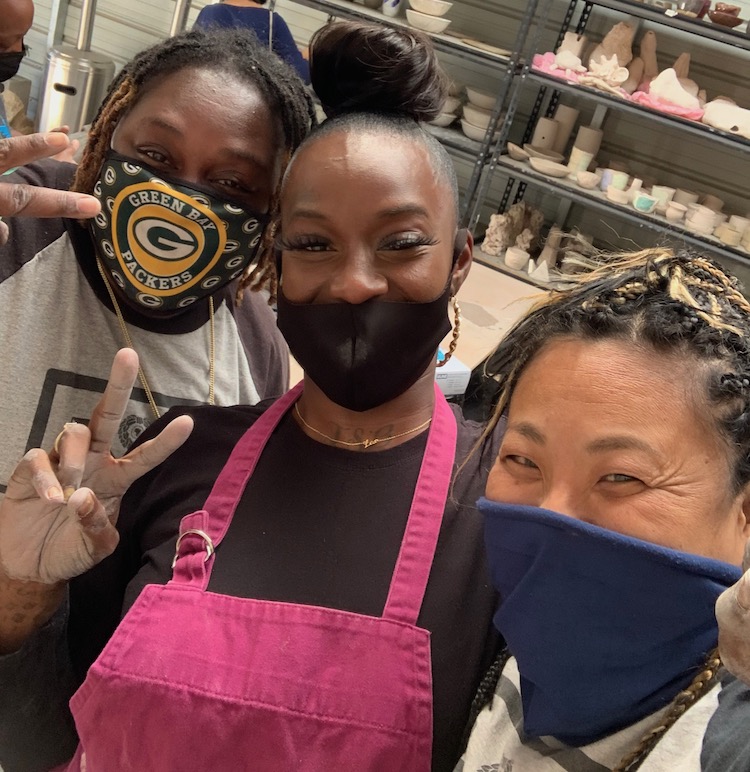
Are you constantly seeking to add new members to the collective, or is that something that happens more organically?
Our main goal is to stabilize our income so that we can keep going with our work and add more members to our group. We had a great boost in December, as people began to learn about us and buy our pottery. Now we are looking to raise money through grants (we have non-profit status through a fiscal sponsor) while expanding the items we offer, as well as designing packaging that can carry the message not only about PPP, but the issues that impact this community. When there was a lull in the pandemic, we had classes of eight people once a week, but those are currently on hold. Once the pandemic lifts, we are excited to begin teaching classes again and having more paid work for new members as well as offering classes and studio use to local artists and families.
We currently employ three people full-time, and two people part-time. Lauren Fuller is the other full-time member; she came on just a couple of months ago. There was an email to CCWP’s membership that she was being released and needed support, so I invited her to come to a class. I hired her shortly after we met—even though we weren’t really making any money yet—because she just has an incredible, beautiful energy, and it felt like she was a necessary component for what we are trying to build. For better or for worse, I use my instincts to hire people. I never ask what people were incarcerated for, though no one here has secrets about their pasts and everyone is open to discuss and share their stories. In fact, I hope that the project will be a platform for our members to tell their stories: each one is so important and moving.
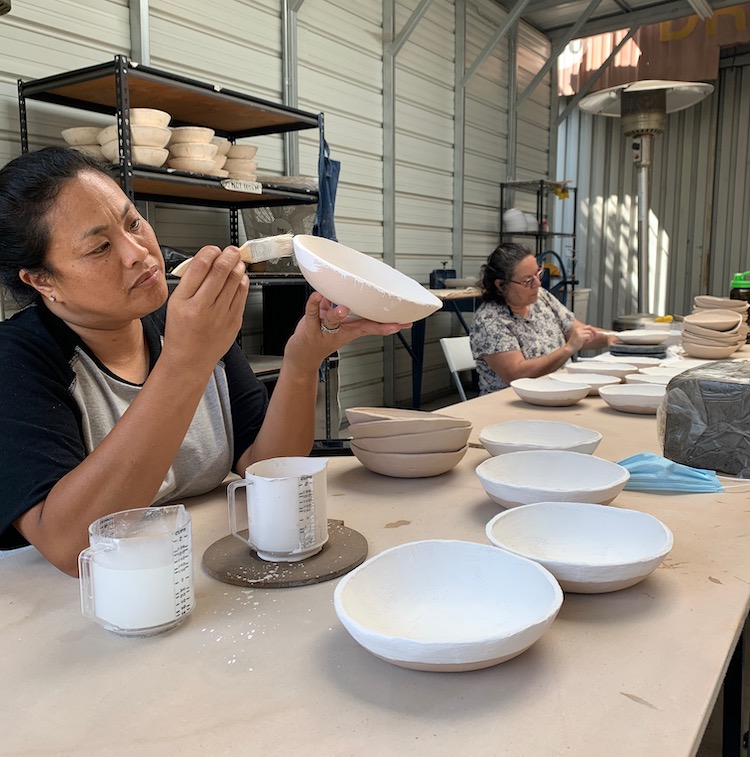
What is the impact you feel PPP has had on its surrounding community, and where do you hope to go from here?
I hope that PPP inspires other artists to get involved in mutual aid work. There is a real need for creative skills but the most important thing—and I can’t stress this enough—is to be involved with a community over a period of time. I encourage people—not just artists—to find existing organizations and volunteer. The groundwork has already been laid by the people most impacted by systemic oppressions such as the prison industrial complex, and they will be the ones who know what is most needed. Before I got involved with CCWP, I went to a variety of organizations and found that my skills weren’t needed or wanted, so I kept looking for the place where I could really plug in. When I did find CCWP, I became part of such an amazing community of people that it was, and is, a joy to do the work. I benefit much more than I give.
It is also important to continually adjust to feedback. I am constantly learning, but it keeps me grounded. I’m a beginner in literally every way in this work.
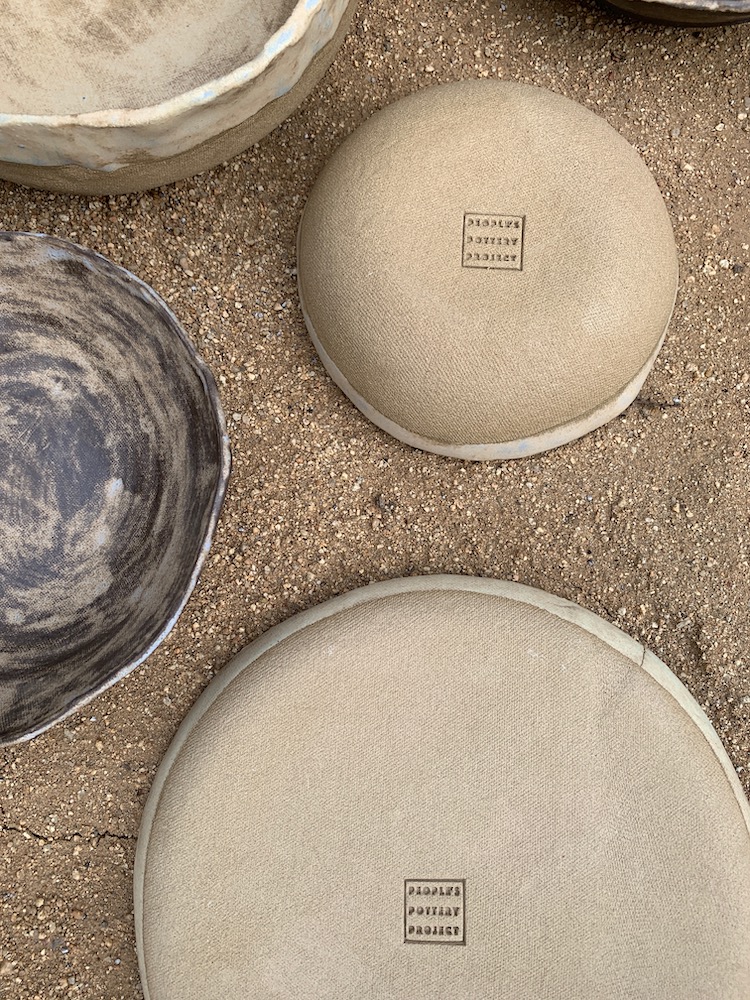
Is there anything else you would like to share with us?
Speaking for all of us at PPP, the objects we make are affordable because we believe art can and should be accessible. Making beautiful, functional, affordable ceramics fills all the aspects of our mission: to share our beauty and creativity, to employ as many formerly incarcerated people as we can in meaningful creative work, and make our ceramics accessible to anyone and everyone.
We are hopeful that our art will also function as advocacy, so that people learn more about the issues affecting us and our loved ones who are still incarcerated. So we want the art to be beautiful, reach a lot of people, and hopefully spark greater interest in the larger systems that we are coming from and that we hope to change.












































































